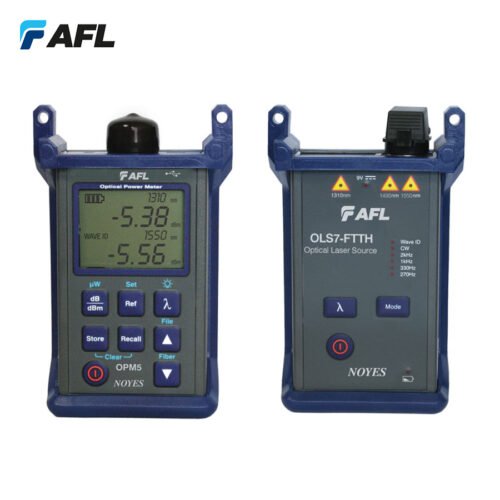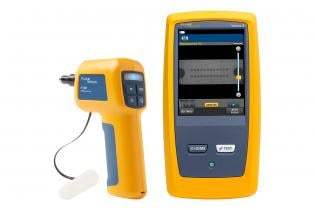Discovering the Effect of Robotic Vision on Modern Manufacturing Techniques and Quality Assurance
Robotic vision technology is transforming the landscape of modern manufacturing and quality control. By integrating sophisticated imaging systems and fabricated knowledge, suppliers can accomplish unmatched degrees of accuracy and effectiveness. This shift not just enhances production processes yet likewise addresses crucial challenges in preserving product criteria. As markets increasingly rely upon these advancements, the implications for future production methods continue to be to be completely discovered. What will this imply for the affordable characteristics of the market?
Comprehending Robotic Vision Innovation
Robotic vision technology serves as the foundation of automation in modern-day manufacturing. It includes the use of video cameras, sensors, and artificial intelligence to allow robots to interpret and reply to aesthetic information from their setting. This modern technology permits robotics to recognize, locate, and examine things, making them with the ability of performing complex tasks such as assembly, evaluation, and product handling with accuracy. The combination of equipment knowing formulas further enhances the capability of robotic vision systems, permitting them to adjust to varying problems and enhance gradually. By refining pictures and information in real-time, robot vision systems can facilitate much faster decision-making and lower errors in producing procedures (optical fibre diameter analyser). This technology not only enhances operational efficiency yet also ensures that quality criteria are satisfied constantly. As the production landscape proceeds to advance, comprehending the details of robot vision innovation comes to be important for leveraging its potential totally
Benefits of Robotic Vision in Manufacturing
Robotic vision modern technology uses significant benefits in manufacturing by improving precision and precision in jobs such as quality assurance and assembly. This raised degree of information guarantees that products satisfy rigorous standards, decreasing waste and revamp. Furthermore, the assimilation of robot vision can cause boosted production efficiency, allowing makers to maximize their procedures and accomplish higher outcome rates.
Enhanced Precision and Accuracy
In contemporary production, boosted precision and accuracy are essential for maximizing manufacturing processes and making certain item quality. Robotic vision systems enable devices to execute intricate jobs with remarkable consistency. These systems utilize innovative imaging technologies to detect minute information and variants in materials, components, and finished items. By assessing aesthetic data in real-time, robotic vision substantially lowers human mistake, causing less defects and better standards. Furthermore, boosted accuracy in measurements and placing facilitates better placement in setting up processes, which is necessary for elaborate layouts. Inevitably, the assimilation of robot vision not just boosts the dependability of making outcomes but also cultivates self-confidence amongst consumers concerning product integrity and performance. This precision is crucial in markets where high quality is critical.
Raised Manufacturing Efficiency

Suppliers are progressively turning to vision systems to improve manufacturing effectiveness across numerous processes. These innovative systems enable real-time evaluation and monitoring, considerably decreasing downtime brought on by mistakes or issues. By incorporating robotic vision, business can automate quality assurance, enabling faster identification of issues and decreasing the demand for human treatment. This brings about streamlined workflows, as robotics can swiftly adapt to changes in production needs without giving up precision. In addition, vision systems promote far better inventory administration by accurately tracking parts and items, making sure perfect source usage. Inevitably, the fostering of robot vision not just improves effectiveness however additionally adds to higher outcome rates, decreased functional costs, and enhanced overall performance in the manufacturing industry.
Enhancing Quality Assurance Processes
Robotic vision modern technology greatly boosts quality control processes in production by using accuracy inspection strategies. These sophisticated systems promote real-time issue detection, making certain that items satisfy rigid quality standards. As an outcome, suppliers can lessen waste and improve general performance.
Precision Assessment Techniques
Precision inspection strategies have reinvented quality assurance procedures in manufacturing, enabling the detection of minute flaws that conventional approaches might ignore. These strategies take advantage of progressed imaging technologies, such as high-resolution video cameras and laser scanning, to accomplish unmatched precision. By making use of robot vision systems, suppliers can automate assessment jobs, ensuring consistent performance and decreasing human mistake. The combination of machine understanding formulas in addition enhances these systems, allowing them to adjust and enhance gradually. Additionally, precision assessment assists in the identification of subtle variations in product measurements and surface area finishes, which can substantially impact total product top quality. As a result, manufacturers can implement corrective actions much more swiftly, eventually causing minimized waste and enhanced client complete satisfaction.
Real-Time Flaw Discovery
Using innovative imaging technologies, real-time problem discovery changes top quality control processes in manufacturing. By incorporating high-resolution video cameras and innovative algorithms, suppliers can swiftly recognize anomalies during manufacturing. This modern technology assists in prompt rehabilitative actions, lowering waste and boosting overall performance. Real-time systems examine items as they relocate along the production line, making certain that flaws are spotted and resolved right away manufacturing schedules. Additionally, the application of artificial intelligence enhances the accuracy of these systems, allowing them to adjust to brand-new problem patterns in time. Makers benefit from boosted product top quality and reduced functional costs. Ultimately, real-time issue detection not just simplifies processes but also promotes a society of constant enhancement in modern-day production atmospheres.
Real-Time Data Analysis and Decision Making
In the dynamic landscape of manufacturing, real-time information evaluation encourages systems to make swift, informed decisions. By leveraging advanced robotic vision technologies, manufacturers can gather and process huge amounts of information immediately. These systems examine visual inputs to monitor production processes, ensuring that any type of variances from quality standards are detected and resolved promptly. Manufacturers can maximize operations by reallocating resources and adjusting process based on real-time understandings.
The combination of data analytics enables for predictive maintenance, where possible devices failings are anticipated before they interrupt production. This positive approach minimizes downtime and enhances total efficiency. fibre testing equipment. The ability to make data-driven choices in genuine time considerably minimizes try this web-site waste and boosts item top quality, enabling manufacturers to react to market needs promptly. Because of this, real-time information analysis not just simplifies production but likewise fosters a culture of continual improvement in modern production environments
Difficulties in Executing Robotic Vision Systems
Implementing robotic vision systems in producing presents a series of difficulties that can hinder their efficiency. One substantial challenge is the intricacy of integrating these systems with existing machinery and operations. Makers frequently deal with compatibility issues with legacy tools, resulting in increased prices and downtime. Additionally, the irregularity in item shapes, dimensions, and products can complicate the calibration of vision systems, requiring considerable training and fine-tuning.
An additional challenge depends on refining huge quantities of aesthetic data in real time. High-performance computer resources are vital, which might need more financial investment in framework. Moreover, there is a scarcity of proficient personnel with the ability of managing and maintaining these sophisticated systems, causing potential functional ineffectiveness. Guaranteeing the integrity and precision of robot vision systems under varying environmental problems poses a constant difficulty. Addressing these issues is important for making best use of the potential advantages of robotic vision in production.
Future Fads in Robotic Vision for Production
As innovations in synthetic intelligence and equipment knowing proceed to evolve, the future of robotic vision in manufacturing shows up increasingly promising. Emerging patterns indicate read more a shift in the direction of more innovative imaging innovations, such as 3D vision systems and hyperspectral imaging, which will enhance precision in quality assurance procedures. Integration with the Web of Things (IoT) will certainly make it possible for real-time data evaluation, permitting robotic systems to adjust quickly to adjustments in the production setting. Moreover, the growth of collaborative robots (cobots) geared up with innovative vision capacities is anticipated to promote smooth human-robot communications, boosting performance and safety and security on the factory flooring. Additionally, the incorporation of edge computer will encourage robotic vision systems to refine information locally, lowering latency and enabling faster decision-making. These technologies will certainly not just enhance making processes however also greatly improve product quality, positioning robot vision as a foundation of future industrial procedures.
Regularly Asked Inquiries
How Much Does Robotic Vision Technology Usually Price?
Robotic vision innovation generally sets you back in between $10,000 and $100,000, depending on the complexity and specs. Factors influencing rate consist of sensor high quality, software capabilities, and integration requirements, making it important to analyze details task demands.
What Industries Are Many Affected by Robotic Vision Innovations?
Robotic vision innovations significantly impact sectors such as manufacturing, auto, electronic devices, and food handling - fibre testing equipment. These sectors profit from boosted automation, improved quality assurance, and boosted performance, causing structured procedures and minimized labor expenses
Can Robotic Vision Solutions Be Integrated With Existing Equipment?
Robotic vision systems can without a doubt be incorporated with existing equipment. This assimilation improves functional performance, allowing manufacturers to utilize progressed modern technologies without the need for full overhauls, thus enhancing manufacturing procedures and preserving top quality criteria.

What Skills Are Needed to Run Robotic Vision Solutions?
Running robot vision systems requires this contact form effectiveness in programs, an understanding of equipment learning, expertise of picture handling strategies, and the capability to repair software and hardware problems, guaranteeing smooth assimilation and excellent performance within manufacturing settings.
Are There Any Type Of Safety Interest In Robotic Vision in Production?
